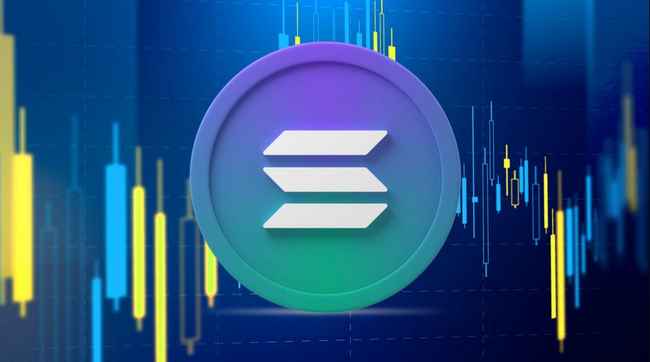-
 Bitcoin
Bitcoin $104,224.1974
1.01% -
 Ethereum
Ethereum $2,560.3829
9.12% -
 Tether USDt
Tether USDt $1.0001
0.02% -
 XRP
XRP $2.4174
1.83% -
 BNB
BNB $663.5043
-1.34% -
 Solana
Solana $177.4403
3.04% -
 USDC
USDC $1.0000
0.01% -
 Dogecoin
Dogecoin $0.2429
16.33% -
 Cardano
Cardano $0.8208
4.26% -
 TRON
TRON $0.2649
0.31% -
 Sui
Sui $4.0677
1.34% -
 Chainlink
Chainlink $17.0611
5.71% -
 Avalanche
Avalanche $25.5486
8.39% -
 Stellar
Stellar $0.3148
4.71% -
 Shiba Inu
Shiba Inu $0.0...01654
8.84% -
 Hedera
Hedera $0.2151
5.77% -
 Toncoin
Toncoin $3.5072
5.98% -
 Hyperliquid
Hyperliquid $25.8795
4.49% -
 Bitcoin Cash
Bitcoin Cash $428.3413
2.84% -
 Polkadot
Polkadot $5.1326
3.07% -
 Litecoin
Litecoin $104.9330
0.87% -
 UNUS SED LEO
UNUS SED LEO $8.2670
-4.90% -
 Monero
Monero $326.7171
5.26% -
 Pi
Pi $0.8475
15.23% -
 Bitget Token
Bitget Token $4.9279
7.16% -
 Pepe
Pepe $0.0...01320
5.67% -
 Dai
Dai $0.9999
-0.02% -
 Ethena USDe
Ethena USDe $1.0002
0.02% -
 Uniswap
Uniswap $7.3533
13.01% -
 Bittensor
Bittensor $461.6048
6.94%
how does solana staking work
By delegating SOL tokens to blockchain validators, Solana staking rewards users with additional tokens while reinforcing network security.
Nov 07, 2024 at 08:10 pm

How Does Solana Staking Work?
Solana staking is the process of delegating your SOL tokens to a validator in order to earn rewards. Validators are responsible for verifying and adding new blocks to the Solana blockchain, and they receive a portion of the block rewards in return. Staking your SOL tokens helps to secure the network and earn you rewards in the form of additional SOL tokens.
Steps to Stake SOL Tokens
- Choose a Solana wallet. There are several Solana wallets available, such as the official Solana wallet, Exodus, and Ledger Nano X. Choose a wallet that you trust and that supports staking.
- Deposit SOL tokens into your wallet. You can purchase SOL tokens on a cryptocurrency exchange or receive them from another person. Once you have SOL tokens in your wallet, you can start staking them.
- Choose a validator to delegate your tokens to. There are many validators to choose from, each with their own fees and rewards rates. Do some research to find a validator that you trust and that offers a competitive rewards rate.
- Delegate your SOL tokens to the validator. Once you have chosen a validator, you can delegate your SOL tokens to them from your wallet. The delegation process is usually quick and easy, and you will need to pay a small fee to the validator.
- Start earning rewards. Once your SOL tokens have been delegated to a validator, you will start earning rewards in the form of additional SOL tokens. The rewards rate will vary depending on the validator you have chosen and the amount of SOL tokens you have staked.
Benefits of Staking SOL Tokens
There are several benefits to staking SOL tokens, including:
- Earn rewards. Staking SOL tokens is a great way to earn rewards in the form of additional SOL tokens. The rewards rate will vary depending on the validator you have chosen and the amount of SOL tokens you have staked, but you can typically expect to earn between 5% and 10% per year.
- Support the network. Staking SOL tokens helps to secure the Solana network. When you stake your tokens, you are helping to validate transactions and add new blocks to the blockchain. This helps to keep the network running smoothly and securely.
- Contribute to the ecosystem. Staking SOL tokens helps to contribute to the Solana ecosystem. The rewards that you earn from staking can be used to pay for transaction fees, purchase NFTs, or invest in other Solana projects.
Risks of Staking SOL Tokens
There are also some risks associated with staking SOL tokens, including:
- Loss of funds. If the validator you have chosen to delegate your tokens to goes offline or becomes malicious, you could lose your staked SOL tokens. However, this risk is relatively low, as validators are required to post a bond to the network, which they will forfeit if they behave maliciously.
- Impermanent loss. Staking SOL tokens is a long-term investment. If the price of SOL decreases, you could lose money on your investment, even if you earn staking rewards. However, if the price of SOL increases, you could make a profit on your investment, even if you do not earn any staking rewards.
- Opportunity cost. Staking SOL tokens means that you are locking up your tokens for a period of time. During this time, you will not be able to sell your tokens or use them to make other investments. However, you can undelegate your tokens at any time, but there will be a cooldown period before you can withdraw your tokens.
Conclusion
Staking SOL tokens is a great way to earn rewards, support the network, and contribute to the ecosystem. However, it is important to be aware of the risks involved before staking your tokens.
Disclaimer:info@kdj.com
The information provided is not trading advice. kdj.com does not assume any responsibility for any investments made based on the information provided in this article. Cryptocurrencies are highly volatile and it is highly recommended that you invest with caution after thorough research!
If you believe that the content used on this website infringes your copyright, please contact us immediately (info@kdj.com) and we will delete it promptly.
- Ethereum (ETH) price traded at around $2,380 after going past critical resistance
- 2025-05-11 11:20:14
- BNB Price Prediction for 2025 and Beyond
- 2025-05-11 11:20:14
- XRP Is Rising from a Lower Level, Exhibiting a Significant Spike in Price
- 2025-05-11 11:15:13
- Ethereum (ETH) Price Traded at Around $2380 After Breaking Past Critical Resistance
- 2025-05-11 11:15:13
- The altcoin (virtual assets excluding Bitcoin) market is skyrocketing.
- 2025-05-11 11:10:13
- From May 5 to 9, the virtual asset market recorded a strong upward trend
- 2025-05-11 11:10:13
Related knowledge

What is Ethereum’s Slashing mechanism and how to punish malicious behavior?
Feb 20,2025 at 03:08am
Key PointsOverview of slashingDifferent types of slashing in EthereumIncentives and consequences of slashingIdentifying and reporting slashed validatorsOngoing discussions and potential improvementsEthereum's Slashing Mechanism: Punishing Malicious BehaviorEthereum's slashing mechanism is an essential tool for ensuring network security and punishing mal...

What is the verifier node of Ethereum and how to become a verifier?
Feb 19,2025 at 06:00pm
The Verifier Node of Ethereum: A Comprehensive GuideKey Points:What is a Verifier Node?How to Become a Verifier NodeResponsibilities and Rewards of a Verifier NodeMinimum Requirements for Becoming a Verifier NodePotential Difficulties in Running a Verifier Node1. What is a Verifier Node?A Verifier Node is an independent entity on the Ethereum network th...

What is Ethereum’s staking, and how to participate and earn money?
Feb 19,2025 at 04:37pm
Key Points:Understanding Ethereum's Staking MechanismSteps to Participate in StakingBenefits and Rewards of StakingSecurity and Risk ConsiderationsTechnical Requirements and Hardware OptionsPotential Challenges and Troubleshooting TipsFAQs on Ethereum StakingWhat is Ethereum's Staking?Proof-of-Stake (PoS) is a consensus mechanism used in blockchain netw...

What is Ethereum’s DAO (Decentralized Autonomous Organization) and how does it work?
Feb 20,2025 at 03:12am
Key PointsDefinition and Structure of a DAOGovernance and Decision-Making in DAOsBenefits and Use Cases of DAOsChallenges and Limitations of DAOsWhat is Ethereum's DAO (Decentralized Autonomous Organization) and How Does It Work?Definition and Structure of a DAOA Decentralized Autonomous Organization (DAO) is an innovative governance and management fram...

What is Ethereum's multi-signature wallet and how to improve security?
Feb 20,2025 at 02:18pm
Key Points:Understanding the Concept of a Multi-Signature WalletBenefits and Drawbacks of Multisig WalletsRequirements for Setting Up a Multisig WalletStep-by-Step Guide to Generating a Multisig WalletImplementing Strategies for Enhanced Security1. Understanding the Concept of a Multi-Signature WalletA multi-signature (multisig) wallet in the Ethereum e...

What is Ethereum's oracle and how to provide data for smart contracts?
Feb 21,2025 at 01:30am
Key Points:Understanding the concept of oracles in EthereumExploring different types of oraclesDetailed guide on how to provide data for smart contractsAddressing potential challenges and considerationsWhat is Ethereum's Oracle?Oracles are crucial components in the Ethereum ecosystem, enabling smart contracts to access real-world data and off-chain even...

What is Ethereum’s Slashing mechanism and how to punish malicious behavior?
Feb 20,2025 at 03:08am
Key PointsOverview of slashingDifferent types of slashing in EthereumIncentives and consequences of slashingIdentifying and reporting slashed validatorsOngoing discussions and potential improvementsEthereum's Slashing Mechanism: Punishing Malicious BehaviorEthereum's slashing mechanism is an essential tool for ensuring network security and punishing mal...

What is the verifier node of Ethereum and how to become a verifier?
Feb 19,2025 at 06:00pm
The Verifier Node of Ethereum: A Comprehensive GuideKey Points:What is a Verifier Node?How to Become a Verifier NodeResponsibilities and Rewards of a Verifier NodeMinimum Requirements for Becoming a Verifier NodePotential Difficulties in Running a Verifier Node1. What is a Verifier Node?A Verifier Node is an independent entity on the Ethereum network th...

What is Ethereum’s staking, and how to participate and earn money?
Feb 19,2025 at 04:37pm
Key Points:Understanding Ethereum's Staking MechanismSteps to Participate in StakingBenefits and Rewards of StakingSecurity and Risk ConsiderationsTechnical Requirements and Hardware OptionsPotential Challenges and Troubleshooting TipsFAQs on Ethereum StakingWhat is Ethereum's Staking?Proof-of-Stake (PoS) is a consensus mechanism used in blockchain netw...

What is Ethereum’s DAO (Decentralized Autonomous Organization) and how does it work?
Feb 20,2025 at 03:12am
Key PointsDefinition and Structure of a DAOGovernance and Decision-Making in DAOsBenefits and Use Cases of DAOsChallenges and Limitations of DAOsWhat is Ethereum's DAO (Decentralized Autonomous Organization) and How Does It Work?Definition and Structure of a DAOA Decentralized Autonomous Organization (DAO) is an innovative governance and management fram...

What is Ethereum's multi-signature wallet and how to improve security?
Feb 20,2025 at 02:18pm
Key Points:Understanding the Concept of a Multi-Signature WalletBenefits and Drawbacks of Multisig WalletsRequirements for Setting Up a Multisig WalletStep-by-Step Guide to Generating a Multisig WalletImplementing Strategies for Enhanced Security1. Understanding the Concept of a Multi-Signature WalletA multi-signature (multisig) wallet in the Ethereum e...

What is Ethereum's oracle and how to provide data for smart contracts?
Feb 21,2025 at 01:30am
Key Points:Understanding the concept of oracles in EthereumExploring different types of oraclesDetailed guide on how to provide data for smart contractsAddressing potential challenges and considerationsWhat is Ethereum's Oracle?Oracles are crucial components in the Ethereum ecosystem, enabling smart contracts to access real-world data and off-chain even...
See all articles






















































































